Australia’s largest flying reptile has been uncovered, a pterosaur with an estimated seven-meter wingspan that soared like a dragon above the ancient, vast inland sea once covering much of outback Queensland.
University of Queensland PhD candidate Tim Richards, from the Dinosaur Lab in UQ’s School of Biological Sciences, led a research team that analyzed a fossil of the creature’s jaw, discovered on Wanamara Country, near Richmond in North West Queensland.
“It’s the closest thing we have to a real life dragon,” Mr. Richards said.
“The new pterosaur, which we named Thapunngaka shawi, would have been a fearsome beast, with a spear-like mouth and a wingspan around seven meters.
“It was essentially just a skull with a long neck, bolted on a pair of long wings.
“This thing would have been quite savage.
“It would have cast a great shadow over some quivering little dinosaur that wouldn’t have heard it until it was too late.”
Mr. Richards said the skull alone would have been just over one meter (3.3 feet) long, containing around 40 teeth, perfectly suited to grasping the many fishes known to inhabit Queensland’s no-longer-existent Eromanga Sea.
“It’s tempting to think it may have swooped like a magpie during mating season, making your local magpie swoop look pretty trivial – no amount of zip ties would have saved you.
“Though, to be clear, it was nothing like a bird, or even a bat – Pterosaurs were a successful and diverse group of reptiles – the very first back-boned animals to take a stab at powered flight.”
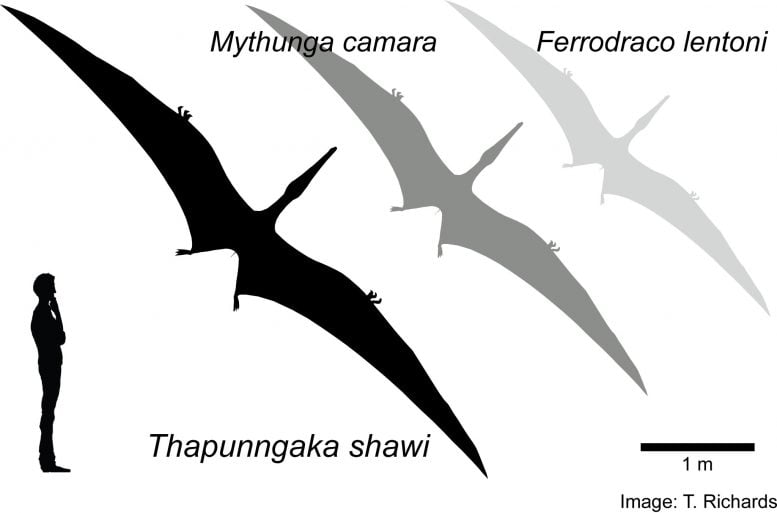
Hypothetical outlines of Australian pterosaurs showing relative wingspan sizes. 1.8 m human for scale. Credit: Tim Richards
The new species belonged to a group of pterosaurs known as anhanguerians, which inhabited every continent during the latter part of the Age of Dinosaurs.
Being perfectly adapted to powered flight, pterosaurs had thin-walled and relatively hollow bones. Given these adaptations their fossilized remains are rare and often poorly preserved.
“It’s quite amazing fossils of these animals exist at all,” Mr Richards said. “By world standards, the Australian pterosaur record is poor, but the discovery of Thapunngaka contributes greatly to our understanding of Australian pterosaur diversity.”
It is only the third species of anhanguerian pterosaur known from Australia, with all three species hailing from western Queensland.
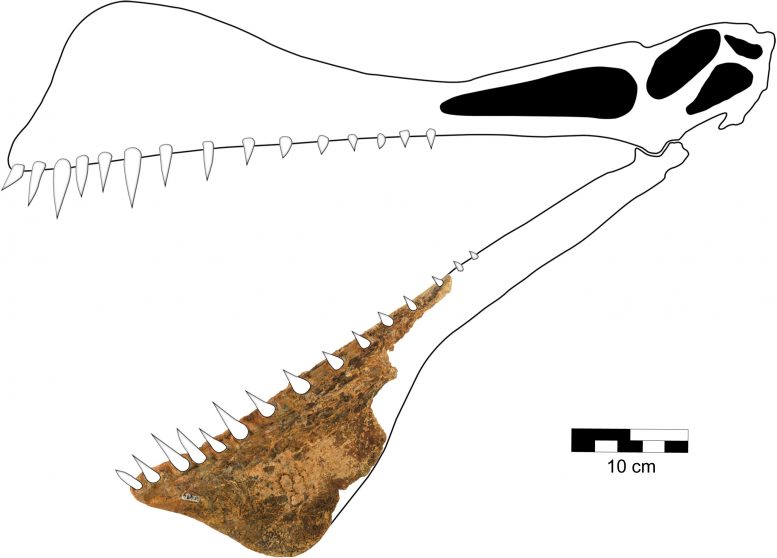
Reconstruction of the skull of Thapunngaka shawi (KKF494). From Richards et al. (2021). Credit: Tim Richards
Dr. Steve Salisbury, co-author on the paper and Mr Richard’s PhD supervisor, said what was particularly striking about this new species of anhanguerian was the massive size of the bony crest on its lower jaw, which it presumably had on the upper jaw as well.
“These crests probably played a role in the flight dynamics of these creatures, and hopefully future research will deliver more definitive answers,” Dr. Salisbury said.
The fossil was found in a quarry just northwest of Richmond in June 2011 by Len Shaw, a local fossicker who has been ‘scratching around’ in the area for decades.
The name of the new species honors the First Nations peoples of the Richmond area where the fossil was found, incorporating words from the now-extinct language of the Wanamara Nation.
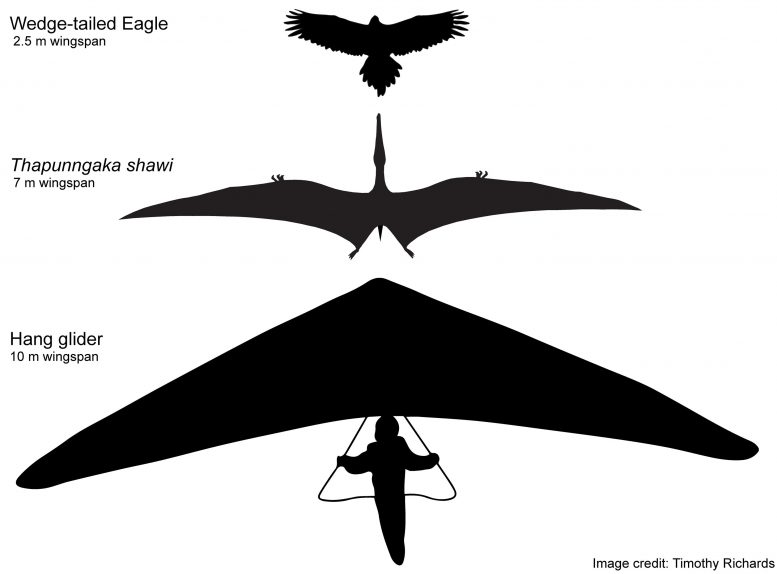
Hypothetical outline of Thapunngaka shawi with a 7 m wingspan, alongside a wedge-tailed eagle (2.5 m wingspan) and a hang-glider (10 m ‘wingspan’). Credit: Tim Richards
“The genus name, Thapunngaka, incorporates thapun [ta-boon] and ngaka [nga-ga], the Wanamara words for ‘spear’ and ‘mouth’, respectively,” Dr. Salisbury said.
“The species name, shawi, honours the fossil’s discoverer Len Shaw, so the name means ‘Shaw’s spear mouth’.”
The fossil of Thapunngaka shawi is on display at Kronosaurus Korner in Richmond.
Reference: “An Upper Triassic Terrestrial Vertebrate Assemblage from the Forgotten Kocury Locality (Poland) with a New Aetosaur Taxon” by Łukasz Czepiński, Dawid Dróżdż, Tomasz Szczygielski, Mateusz Tałanda, Wojciech Pawlak, Antoni Lewczuk, Adam Rytel and Tomasz Sulej, 6 April 2021, Journal of Vertebrate Paleontology.
DOI: 10.1080/02724634.2021.1898977

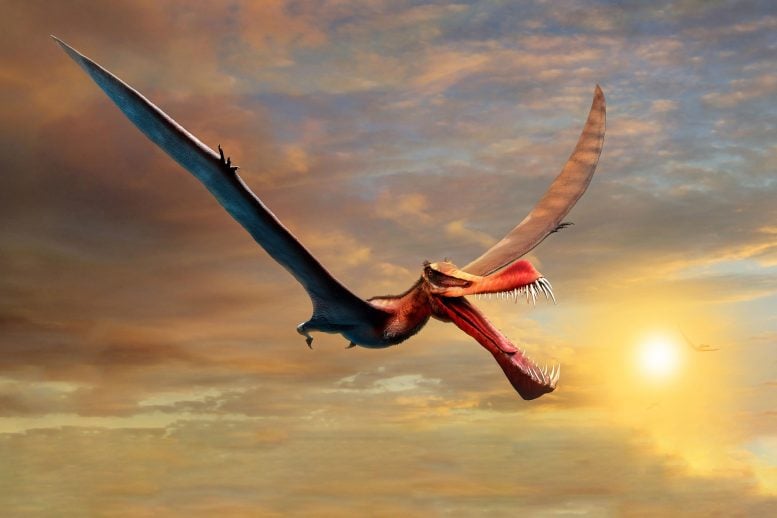
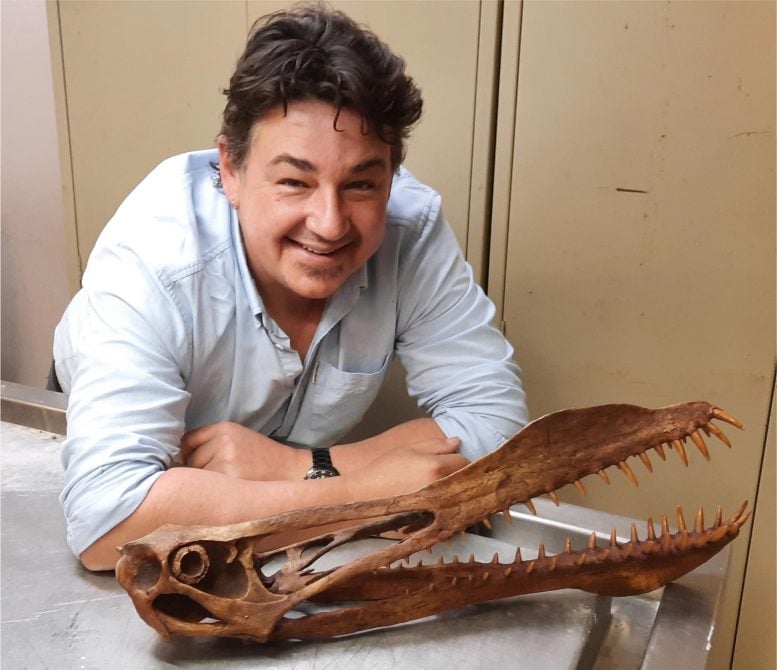


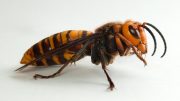
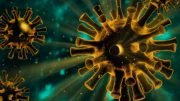


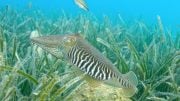

Wow, what disaster would it be if some evil scientist clone it with DNA found in the fossil?
Heavy snout is a flight feature this goes against evolution .a flying bird has it on its beak this feature not popular with birds because bad aero and heavy but pterosaur is a aquatic dinosaur and is simular to flying animal were drag is a problem. flying animal aquatic animal simular evolution .fish have small smooth scales it’s all about speed pterosaur has smooth skin .allso is a fast dinosaur mesoeucrocodylia allso very fast dinosaur they are alive so they are the greatest dinosaur the most advance dinosaur ever.skull crest usual at the back voay mesoeucrocodylia pterosaur duck bill dinosaur all these are aquatic animal bird skull crest are feather or fleshy soft skin no heavy armor skin only flightless bird or fossil flightless bird like oviraptor have armor skull crest . predator theropod have it same place but these are land dinosaur usual have big over the top scales like stegosaurus triceratops carntosaurus .today land dinosaur are heavy armor skin like dwarf caiman dwarf crocodile Chinese gator .pterosaur very aquatic dinosaur was a sting ray mimic smooth skin Webb feet was the norm so a front crest skull should not be there less it’s a male like a male gharial .i think the most interesting thing something i miss the pterosaur temporal fenestra it’s like modern crocodilian a advance feature it is fuse this is very rare in thecodont it’s only found in dinosaur pterosaur is a dinosaur only know of one protosuchus type with this feature ..the first mesoeucrocodylia spinosauridae the temporal fenestra is not fuse like most dinosaur the thecodont that are not dinosaur allso dwarf caimans .because spinosauridae has a weak bite when vs the gator spinosauridae were a transition dinosaur that turn into modern crocodilian that why still see primitive feature like fuse ankle 3 finger gator there successer have 5 finger i guest 2 miss claws is a advance feature gator still going strong in swamp of Florida and the cold state .gator are strange they still has dinosaur grasping big thumb claws there finger are quadrupedal thou and gator is head killer dinosaur like other tyrannosaur like t.rex which do not grasp there prey these dinosaur have a power bite full palate dinosaur .primitive dinosaur up and down skull dinosaur that eat like birds have weak skull that why grasp there prey but prey animal like none of them curve serrated teeth are design to kill fast one bite kill it remove a lot of flesh but probaly not as good against large prey .predator animal 2 more bite is not a good thing for a predator.spinosauridae a death roll animal hold rip thing off like a head of a prey .mesoeucrocodylia brought back ziphodont teeth many times gator lack serrated teeth and dinosaur type curve teeth but crocodile teeth is serrated like baryonyx one gator dwarf caiman has dinosaur curve teeth since caiman are gator they lack serration and so it’s not ziphodont .pterosaur clearly is aquatic the nose fuse to antorbital nose is going backword big snout which is big skull like crocodilian smooth skin like whale mesoeucrocodylia and turtle . early pterosaur has serrated teeth later lack serration teeth or no teeth I think no teeth thing .early pterosaur has stiff tail like tetanuran dinosaur .later pterosaur tail is like the gator very movable tail a aquatic tail. Spinosaurus have fossil In there stomach of pterosaur and pterosaur is not alive any more because of great dinosaur spinosauridae .Nile crocodile have a small wing all crocodile have wings . pterosaur have big wing all gator lack wings .